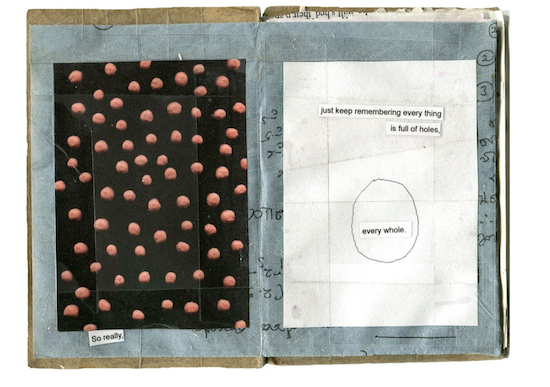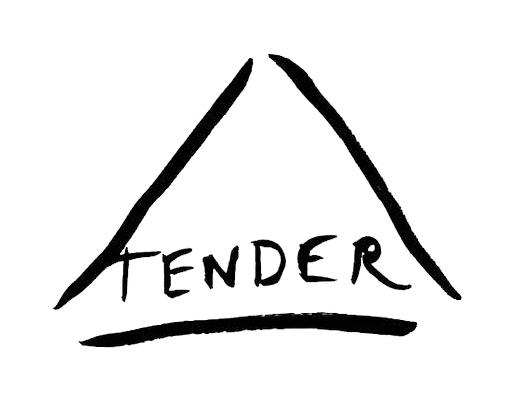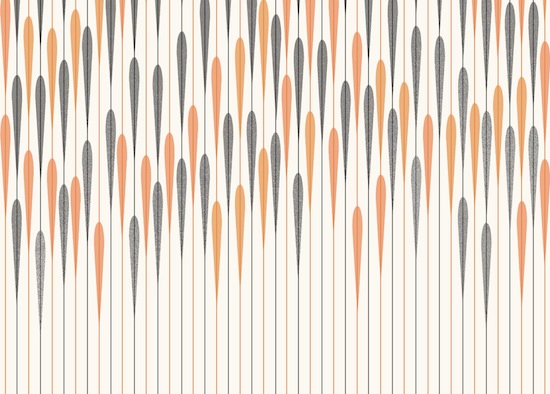I was excited about tender when I heard it was being set up by poets Sophie Collins and Rachael Allen. tender is providing a platform for female-identified writers and artists, still not afforded anything like the visibility of their male counterparts – and engaging with thorny questions about gender and writing in the process. It’s a beautiful object; Collins and Allen write lucid, passionate editorials; and they feature some stonking material – contributors who have jumped out at me in the first two editions include Laura Jane Faulds, Hannah Le Feuvre, and Carina Finn, whose ‘Fair Unknown’ includes the terrific lines ‘I finally get to be the man. / I bestride the world and it’s awful.’ tender two has an interview with Lavinia Greenlaw, who, on the question of whether she is a ‘woman poet’ or not, says ‘it was not a condition I aspired to but then again I didn’t want to be a male poet either’. tender is grappling, I think, with Denise Riley’s claim in Am I That Name that ‘both concentration on and refusal of the identity of “women” are essential to feminism’.
I’m curious about the name ‘tender’. How did this arise? Obviously it’s very playful and ambiguous as a word – how does it capture what you’re aiming to do with the magazine?
Sophie Collins: tender came instantly when I began thinking about potential names for the journal. It’s hard to pinpoint exactly where it came from, but it probably emerged from several points of reference— Tender Buttons by Gertrude Stein and also that Jenny Holzer truism ‘it is in your self interest to find a way to be very tender’. As a word it has a huge scope of meaning— kindness, softness, mercy, meat, youthfulness, vulnerability, bargaining, offering, protectiveness, money, debt. I found out recently that it can also mean ‘a small boat’ as well as ‘a vehicle drawn behind a steam locomotive to carry the fuel and water’, which is cute. As you point out, its playfulness as a title lies in its ambiguity, although generally I think the assumption is that with ‘tender’ we mean affectionate/nurturing, or else painful/sore and easily damaged. In each issue we put forward a definition of the word to counter that assumption.
Can you say something also about the ‘female-identified’?
Rachael Allen and Sophie Collins: We use this term when outlining who is eligible to submit to the journal because it recognises that gender is fluid and self-identified. We want to include trans women and those who have historically been excluded from women’s space and platforms for feminist expression.
And something about the genesis of tender: you describe Mark Grist’s spoken-word piece, ‘I like a girl who reads’, viewable on YouTube, as the trigger (very understandable!); I wonder if there were other things that irked you and made it feel necessary?
RA: The Grist poem came after a number of triggers within the same vein. I’d been watching films and had become agitated with the manic pixie dream girl trope, aggravated with the archetypal male brooding flawed character, and the female support roles. So rarely is a female character truly flawed, and if she is, it’s used to enhance her sexuality or attractiveness. Wendy and Lucy is this one film that completely stuck out for me, with this hopeless protagonist, played by Michelle Williams, traipsing around broke, trying to feed her dog. It’s so real and genuinely uncomfortable to watch because we’re so used to seeing men in that position. I’d also been watching the VIDA counts, following the news of domestic violence against women— and then hearing something like Mark Grist’s poem, something so utterly deceiving, something disguised as anti-sexist and fooling so many, working only to sustain the idea that a woman’s attributes and habits are designed for the male gaze. It felt too frustrating to do nothing.
SC: Rachael shared the Grist poem with me over a year ago now, and at the time we planned to write a response which we would then submit to an existing feminist blog. The response itself soon fell by the wayside and we honed in on the concept of a website simply showing work by female writers and artists, which felt like a far more positive thing for us to be spending our time on. The idea for the blog evolved into that of a journal, and although we’ve moved on we felt it important to reference the Grist piece in our first editorial, as it really was the trigger that set tender into motion. Of course there were other things, other poems, books, attitudes and statements — most far more conspicuous and outwardly misogynistic than Grist’s — but there was something very particular in the tone of ‘I like/want a girl who reads’, in its guise as ‘being supportive of women’ when it in fact entirely reinforces patriarchal values via sexist tropes, that made it such a valid point of contention for us.
You are both writers. How have your experiences of being writers, and of being women writers, affected your decisions to set up tender? (I’m thinking of what Lauren Elkin, in her White Review piece on écriture féminine, describes as the ‘fratboy culture of the mainstream literary world, bros bigging up bros’…) How has the question of the marginalisation of women writers surfaced for you in your work?
RA: I have endless admiration for Elizabeth Bishop for refusing inclusion in an anthology of all-male poets James Laughlin was preparing, for when she was asked (they needed a ‘female’ in the book) she declined on the grounds of not wanting to be the books ‘sex appeal’. I know this attitude (needing a woman, needing ‘something else’) still proliferates journals and publishing houses, and it’s for for positive reasons— editors are aiming to redress an imbalance. The issue is that we still have editors counting the numbers of male/female contributors, and the sad thing I have noticed in my personal work is that women do submit less to journals and publishers. This is a symptom of nothing other than years of writing on the periphery, something that’s only been addressed within the last thirty years or so. I believe that one of the ways to tackle this discrepancy is to provide a space for women’s work. The first book of poems I ever loved was the Bloodaxe Book of Modern Women Poets, and I’ve battled with how I feel about the premise of that book (in regards to whether I feel it is correct or not). I’ve come to the conclusion that it is a good thing, as I would not have come across many of those female poets until a lot later in my writing life. In my own work, I’ve not experienced what you would deem, I suppose, any ‘direct’ discriminations, or, if I have, I’m just too dense to have realised. It’s always only ever been glimpses on the periphery, the reminder there’s work to be done.
SC: As Rachel Blau DuPlessis puts it, poetry is a social world like any other, and for anyone to say that they do not perceive some form of discrimination based on race or gender within it is, to my mind, illusory. As Rachael says, the gender imbalance in literary submissions is testimony to repression, the fact that women send out less a symptom of our historical marginalisation rather than the result of some kind of naturally feminine self-effacing impulse (as I have heard it claimed). On a basic level, our own experiences of the imbalance between male/female poets and writers participating in readings and being featured in anthologies and periodicals played a fundamental role in our decision to set up tender. When I started to become more fully aware of the reach and hold of this inequality, I began routinely, almost unconsciously tallying male:female ratios in literary articles, best-of lists, awards nominations, etc. At the same time, the way I read and went about selecting my reading changed in that both became more active and politically engaged pursuits. This shift has naturally impacted on all aspects of my own work.
I’m curious about whether you want to simply create a writerly space for women, or whether you’re also keen to address, through the content, women’s particular experiences. I’m interested in the lucid and passionate claims you make in the editorial of the first issue about the ‘chronic marginalization of women writers’, and the quote from Louise Bernikow that ‘the preoccupation with love…has been turned against women’ – I wonder how you see the relationship between the question of space for women’s writing, and that writing itself?
So I’m thinking about Lauren Elkin’s essay again, and her question: ‘What’s wrong with writing like girls?’ She touches in that essay on the resistance by many women writers to be seen as women writers – on their insistence that writing is not gendered, perhaps because to be framed as a woman writer can then lead to not being seen as a writer, and addressing the large questions that men’s writing (of course also filtered through gender, though not often acknowledged as such) is seen as addressing. I wonder if you have any ambivalence about the space you are creating? And do you see yourselves, in your own writing, as ‘writing like girls’; as being women writers; as addressing questions of gender?
SC: We want the journal to be a platform for women’s art and writing, whether or not the content deals directly with women’s particular experiences, as I feel the latter can also be expressed indirectly and/or cumulatively. The Bernikow quote came from The World Split Open, an anthology of female poets I was reading at the time of our putting together the first issue, and, while we were writing the editorial, generated a bit of debate between us. We both have varying ideas about feminism and accordingly the work in the journal stems from and/or presents feminist concepts of differing strands. To provide a space where such pieces can coexist alongside others that are perhaps less overtly politicised is something that is very important to us. Ambivalence is, I feel, a positive state, and although I’ve personally never had any qualms about the concept of the journal, I am understanding of the desire to be recognised as an individual, even if the wish to transcend gender and cultural identity seems impossible and maybe even ironic in the sense that all female-identified writers and artists have, on some level, gained from the development of a feminist criticism. It would also seem totally natural for a historically marginalised group to want to discuss the terms and recurring effects of that state via art if they are artists. With regards to my own writing, my feeling is that preoccupations with feminism and gender manifest themselves in the language and subject matter of my poems in oblique but perceptible ways. However, I’m also working on a series of (loosely-termed) translations that are maybe more ‘up front’ in announcing their engagement with these concerns.
RA: I think an issue like this, at this point in time, is unsolvable. I don’t know whether we’re programmed to like pink or not, but I do know that I don’t want anything to be assumed of me on account of my gender. Yet we’re born with natural instincts according to our gender and we are also cultured towards a gender. In that sense I’m a woman writer; I’m a product of my gender and all the connotations attached, as are the writers and artists in the journal. It is the overuse of ‘woman’ as a preface in writers’ biographies I take issue with. I tend to resist the preface solely because it seems not to be necessary for male writers. Why a female writer should require a preface and a male writer shouldn’t is quite beyond me, it reminds me of a warning, or of the sighting of a rare animal. My own poems are never actively ‘female’, and I don’t aim to address sexism or marginalisation. I write about my own experience, which is female, but when I am writing gender is not at the forefront of my mind.
What have the responses been to tender so far?
SC: The responses have been great, really encouraging. We put on a reading in Belfast recently with Eileen Myles, who also has some poems in the second issue, and before she began reading her work she mentioned the tender editorials and spoke for several minutes about the value of increasing the visibility of women’s work — how it’s not as simple as grouping ‘female poets in a female journal’ — and the difficulty of articulating your experiences (not least in terms of tone) as a woman, a writer and a woman writer. It felt like an important moment.
We’ve not had any negative responses as such, but perhaps a few passive aggressive ones that are usually phrased as questions — ‘Why does an all-female journal deserve to be read by men?’ — but feel more like indictments. When we first came up with the idea for the journal we also encountered variations on ‘But why no men?’ and it’s tricky outlining the precise difference between a platform for female expression and a platform for feminist expression, as they’re not mutually exclusive. We identify primarily as falling under the rubric of the former, and in our editorials have tried to express as clearly as possible the reasons we feel such platforms are necessary at this point in time— simply put, we want to make the work of women more visible. However, there’s a difficulty in that those who have a visceral fear or anger towards the idea of an exclusively female publication probably won’t go as far as to read them.
RA: To add to that, we’ve been exposed to exclusively male anthologies for a very long time, and the situation we have now is one of a major discrepancy between women’s and men’s visibility in art and writing. We both agree on the idea of the journal being rooted in the idea of female expression. I think no one can agree with a segregation of the sexes, and the fact that all-female platforms have to exist at all is a result of the harm patriarchy has inflicted. Bishop said it was ‘a lot of nonsense, separating the sexes’, and, in a way, she’s right. But the VIDA counts and contributors’ lists for many publications show that people, editors, need a place to look. I see tender as aiming towards, and with its ends in equality.

Can you say a bit about the aesthetic of tender? The design of it?
SC & RA: We didn’t really enter into the editing of the first issue with a particular aesthetic in mind— our aim was simply to gather the absolute best of the writing and art around us. In terms of the artwork, in the first issue a lot of this was in some way referencing the internet, but we also have a comic strip by Donya Todd in there and two beautiful paintings by Alicia Rodriguez. I think the fact that there is perhaps a majority of visual art that is in some way influenced by the internet and new media is a reflection of the medium and of the current climate. With both the first and second issue, the presence of any collective aesthetic can, I think, be found in the sheer diverseness of the pieces included.
Are there women writers you think are not getting enough visibility that you would like to see championed more? Who are you reading? Who should we be reading?
SC & RA: All the tender contributors! Especially Emily Toder, Carina Finn and Laura Jane Faulds.
RA: Mary Ruefle, Dorothea Laskey, Barbara Ras, Lyn Hejinian, Noelle Kocot, Marie Howe, Mei Mei Berssenbrugge, Emily Berry, Diane Cook, Karen Green, Jennifer Knox — these also deserve more visibility but perhaps are unread here because they’re mostly American and with the exception of one or two I don’t think they’re published so much in the UK. Some amazing journalists and foreign correspondents are also worth a mention, for their incredible work in an industry dominated by men — Sonia Faleiro is amazing, Lindsey Hilsum, Frances Harrison and Barbara Demick.
SC: Heather Christle, Roxane Gay, Linda Kunhardt, Kate Kilalea, Rae Armantrout, Astrid Lampe, Inger Christensen, Eileen Myles, Lydia Davis, Chelsey Minnis, Bernadette Mayer — some of these are big names but, like Rachael said, are not widely read in the UK simply because the majority are based elsewhere and so are perhaps less visible — they’re not usually taught here, don’t often give readings or crop up so much in our magazines. Conceptual or avant-garde writers like Cia Rinne, Caroline Bergvall, Vanessa Place, Juliana Spahr and Jennifer Karmin are also making things that are reaching beyond what many might consider ‘poetry’. I think they should be seen by everyone.

tender journal issue two is out now


